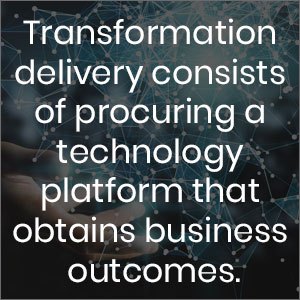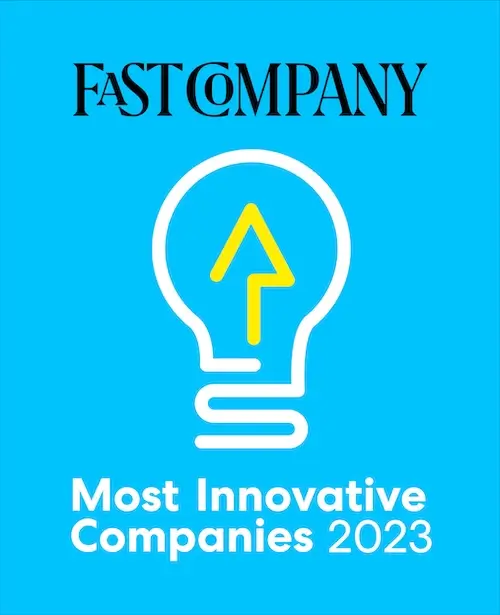In this day and age, legal digital transformation requires a workforce that is not only able and willing to change but ready to adapt to whole new ways of working.
That means that legal teams need to become – and remain – digitally dexterous. And they must achieve this digital dexterity in full service of digital transformation – to better apply technology and improve all of their business outcomes. In fact, this should form the basis of any digital workplace program moving forward, according to Gartner.
Still, leaders of digital transformation projects need to adopt and implement better systems and platforms in the first place. They must successfully bring together these technologies and people. And they have to set up employees to succeed within this interrelationship. In the near future, a variety of legal functions will be augmented and automated as a result of such thoughtfully executed digital transformation projects.
BECOMING MORE DIGITALLY MATURE
It is true that the delivery of brand-new technology can far too easily end up in failure. In fact, 45 percent of digital transformation projects fail to deliver the expected return on investment (ROI) and profit, according to McKinsey. On average, the likelihood of surpassing profit expectations is merely one in ten. Nevertheless, McKinsey Quarterly says: “For established companies, the pressure to digitize business models and products has reached a new intensity.”
Legal digital transformation requires a workforce willing to change and adopt the technology. The best-performing decile of digitized incumbents earns as much as 80 percent of the digital revenues generated in their industries.” So, legal professionals can better the chances that their digital enablement will beat performance expectations. McKinsey’s latest research also shows that the most effective digital transformations are “distinguished mostly by the best practices that executives choose to follow.” By sticking to a well-defined set of transformation practices, they can increase the likelihood of exceeding profit expectations by 50 percent or more. That is roughly five times better than transformations that do not include any of these practices.
Essentially, legal professionals need the correct situational awareness when it comes to legal digital transformation. It is not simply about deploying technology. It is not merely about bringing in machine learning. And it is not just about bringing in a holistic, end-to-end tool either. Most importantly, it is about a journey that involves transforming legal services and business models overall. As such, musing about a transformation model at the very outset is critical.
LEGAL DIGITAL TRANSFORMATION MODEL
In the legal industry, becoming more digitally mature is a journey from getting transformation-ready to delivering new technology, solutions, and paradigms – and achieving success. Having worked closely with legal departments across the globe for several years, ContractPodAi devised a model of its own. We recommend that legal teams use it when embarking on their legal digital transformation. Our Transformation Model has three critical facets:
1. TRANSFORMATION READINESS
- Assess your current technological state
- Identify your critical business outcomes
- Build a blueprint for transformation
2. TRANSFORMATION DELIVERY
- Procure a technology platform
- Deliver implementation plan
- Embed legal design and engineering methodology
- Digitalize your legal data
3. TRANSFORMATION SUCCESS
- Adopt a plan
- Identify champions
- Measure success criteria for business outcomes
TRANSFORMATION READINESS
This first facet involves assessing your current technological state, identifying your critical outcomes, and building a blueprint for digital transformation. Firstly, analyze and scorecard the current state of your technology. You will find that you are in either a nascent, evolving, or mature stage. Common metrics to identify gaps in your technology capabilities include legal data assessment, the legal review process, search capabilities, legal workflow and approval systems, as well as signature management.
Transformation delivery consists of procuring a technology platform that obtains business outcomes. Next, identify your critical business outcome and key performance indicators (KPIs), prioritizing the technology capabilities needed to achieve this. And following this, create a blueprint, which identifies steps that you will take to attain transformation success. Build use case stories – within this blueprint – to improve your technology deficits. Layout a phased approach so that you are able to undergo your digital transformation incrementally.
Just as importantly, transformation readiness includes the identification of benchmarks and quantifiable metrics, with which you will measure success and failure in real-time. All of these actions represent a significant start in your technology platform deployment.
TRANSFORMATION DELIVERY
As the second facet, transformation delivery consists of procuring a technology platform that helps you obtain your critical business outcomes; delivering an implementation plan; embedding legal design and engineering methodology, and digitalizing your legal data. What is key at this point is not waiting for an ideal system to be ready before you ‘go live’ – and to deliver everything in the same go. That is when projects are invariably delayed. Think instead of the incremental transformation philosophy. Think about agile deployment. These will ensure that you do not delay your implementation and allow you to seek improvements while you think about your individual use case. After all, you are not operating in a perfect world – nobody is. It is only when you actually start using the system that you know what you really need to build upon – and better – the solution.
TRANSFORMATION SUCCESS
This third and final facet of digital transformation requires adopting a plan, identifying champions, and measuring success criteria for all business outcomes. The latter is about looking at the metrics that you decided to use while getting transformation-ready. Achieving transformation success means hitting on and, indeed, exceeding the benchmarks that have been previously set. So, make certain that your supplier works with you hand-in-hand, helping you to achieve all of these business outcomes. Then, perhaps, you can work together on even larger transformation projects, heading into the future.
The bottom line is that legal teams reap all of the rewards when applying a legal digital transformation model like the one mentioned above. But it is something that needs to be carefully thought about – and clearly planned out – at the very beginning of their digital transformation journeys.
For further information on how to begin your own legal digital transformation, read our latest e-book, “Three Stages of Legal Digital Transformation.” It is a free publication, with many helpful tips for you and your legal team, including how to go about choosing their right technology vendor.
Author:

Viraj Chaudhary
Connect with us on Linkedin











